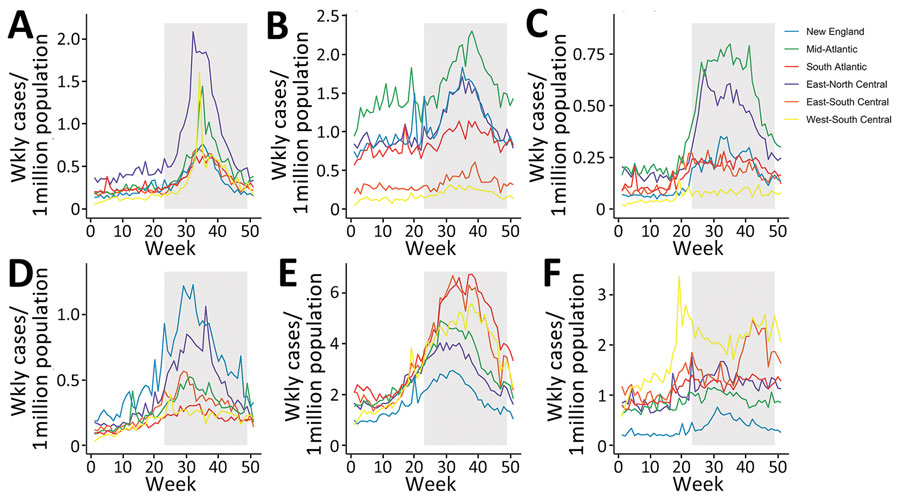Volume 29, Number 8—August 2023
Research
Waterborne Infectious Diseases Associated with Exposure to Tropical Cyclonic Storms, United States, 1996–2018
Figure 1

Figure 1. Average weekly cases by geographic region in a study of waterborne infectious diseases associated with exposure to tropical cyclonic storms, United States, 1996–2018. Graphs indicate weekly number of cases per 1,000,000 populations for the following waterborne diseases: A) cryptosporidiosis; B) giardiasis; C) Legionnaires’ disease; D) Escherichia coli infection; E) salmonellosis; and F) shigellosis. Not all infections were reported for the entire study period (Table 1). The shaded region represents the weeks encompassed in the annual Atlantic storm season, June 1–November 30. The geographic regions reflect the reporting areas used for infectious disease surveillance in the National Notifiable Diseases Surveillance System (https://www.cdc.gov/nndss). The New England region comprises the states of Connecticut, Maine, Massachusetts, New Hampshire, Rhode Island, and Vermont; the Mid-Atlantic Region comprises New Jersey, New York, and Pennsylvania; the South-Atlantic Region comprises Delaware, Florida, Georgia, Maryland, North Carolina, South Carolina, Virginia, West Virginia, and Washington, DC; the East-North Central Region comprises Illinois, Indiana, Michigan, Ohio, and Wisconsin; the East-South Central Region comprises Alabama, Kentucky, Mississippi, and Tennessee; and the West-South Central Region comprises Arkansas, Louisiana, Oklahoma, and Texas.